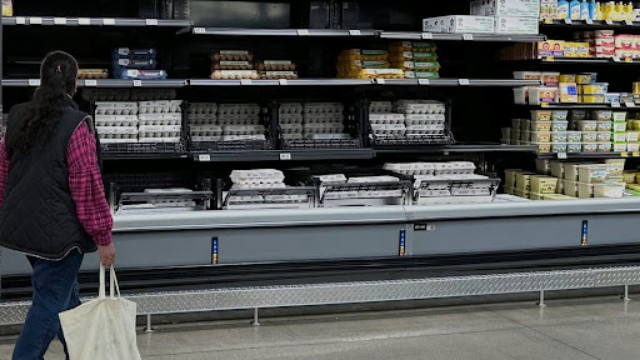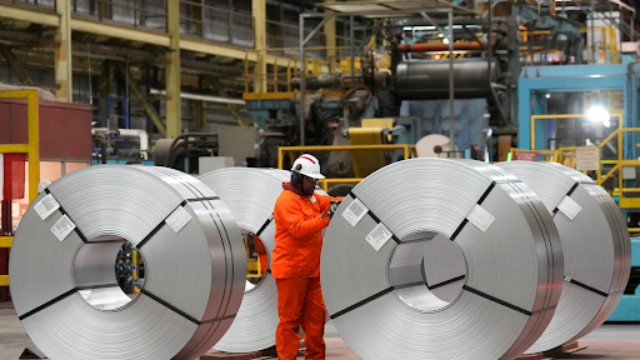
A customer walks past stacks of egg cartons at a Walmart store. (AP Photo/David Zalubowski, File)
Wholesale prices in the United States saw a slight increase in May 2025, signalling that inflation remains mostly under control. According to a new report from the U.S. Labour Department, the producer price index (PPI), which tracks prices businesses receive for their goods and services, rose by 2.6% compared to the same time last year.
Monthly, producer prices edged up just 0.1% from April to May, a small rebound after a 0.2% dip the month before. When excluding the often unpredictable food and energy prices, wholesale prices were still up by 0.1% month-over-month and showed a 3% increase year-over-year.
These numbers came in slightly below what many economists had expected, hinting that inflation is still manageable, even as prices for some essentials begin to creep upward again.
Gasoline prices, which had dropped in April, bounced back with a 1.6% rise in May. Overall energy prices, however, remained steady. Food prices at the wholesale level went up slightly by 0.1%, recovering from a 0.9% drop the month before. Egg prices, which have been volatile due to bird flu outbreaks, climbed by 1.4% after a massive 39.3% plunge in April. Compared to last year, eggs are now 125% more expensive.
This producer price report followed another government update that showed consumer prices also ticked up slightly. The Consumer Price Index (CPI) rose 0.1% from April to May and is 2.4% higher than the previous year. Both figures suggest that inflation, while still present, isn’t gaining momentum at a worrying pace.
Despite President Donald Trump’s broad tariff policies—which include a 10% tariff on most imports and specific duties on items like steel, aluminum, and automobiles—there hasn’t yet been a major jump in prices. While importers often pass these added costs onto consumers, overall inflation has stayed mild for now. But many economists warn that higher prices may start showing up later this year as the effects of the tariffs ripple through the economy.
Economists closely monitor the producer price index because it often hints at what’s ahead for consumer prices. Some parts of the PPI, especially in healthcare and financial services, are also factored into the Federal Reserve’s preferred inflation measure—the PCE index.
Inflation became a major concern in 2021 when the post-COVID economic recovery outpaced expectations. In response, the Federal Reserve raised interest rates 11 times during 2022 and 2023. These increases helped cool inflation, and last year the Fed cut rates three times.
However, the Fed has paused further rate adjustments in 2025, adopting a wait-and-watch approach. With tariff-related uncertainties still in play, the central bank is expected to keep interest rates steady during its upcoming meeting next week.
Carl Weinberg, an economist at High Frequency Economics, noted that the current data gives the Fed no reason to raise rates now. In fact, he suggested that without the looming tariff hikes, a rate cut might even be on the table.















